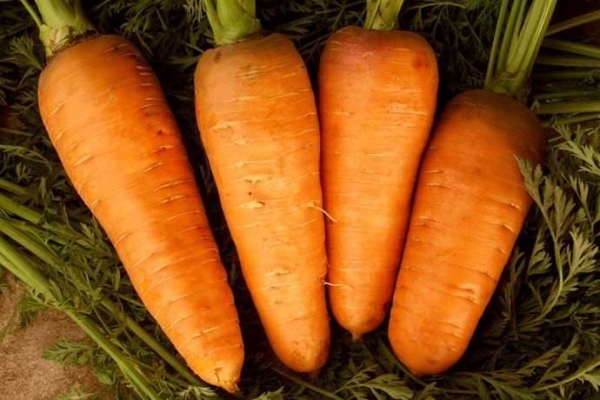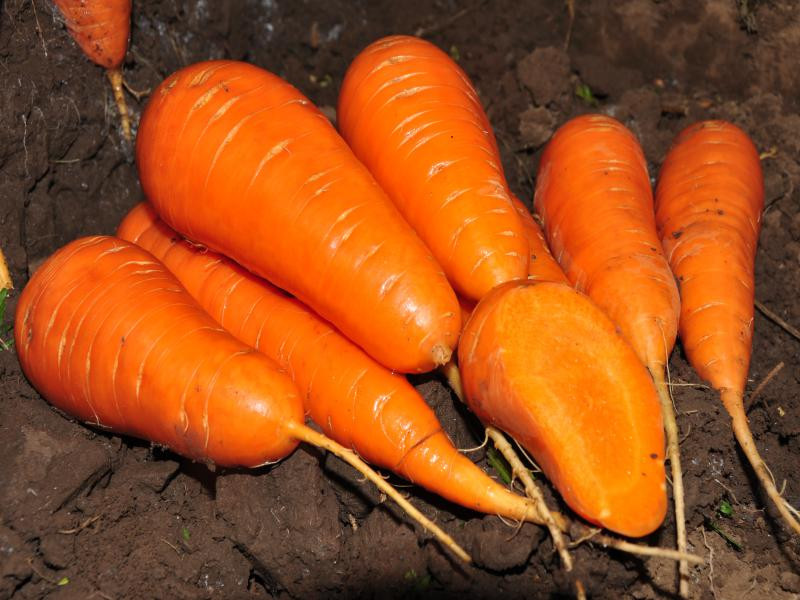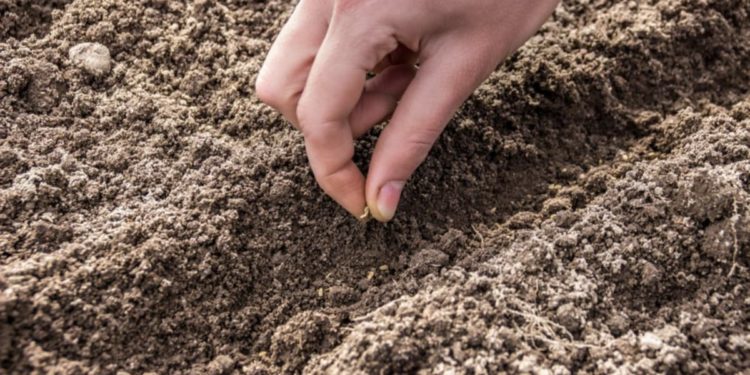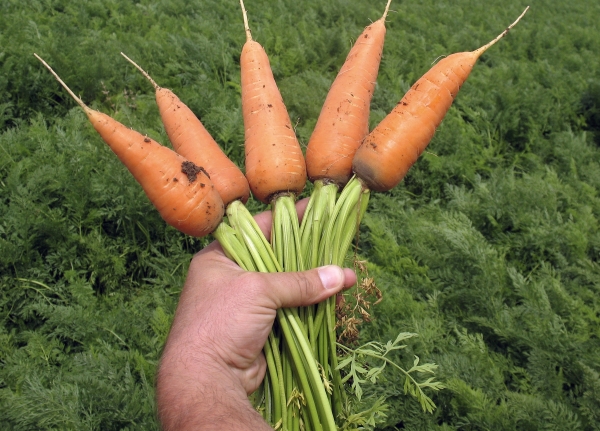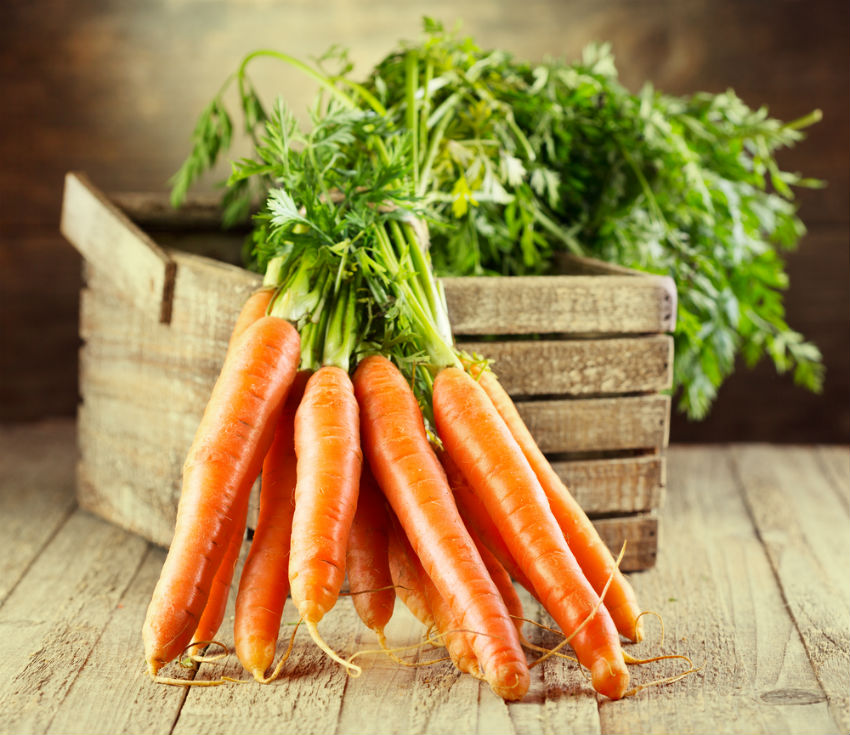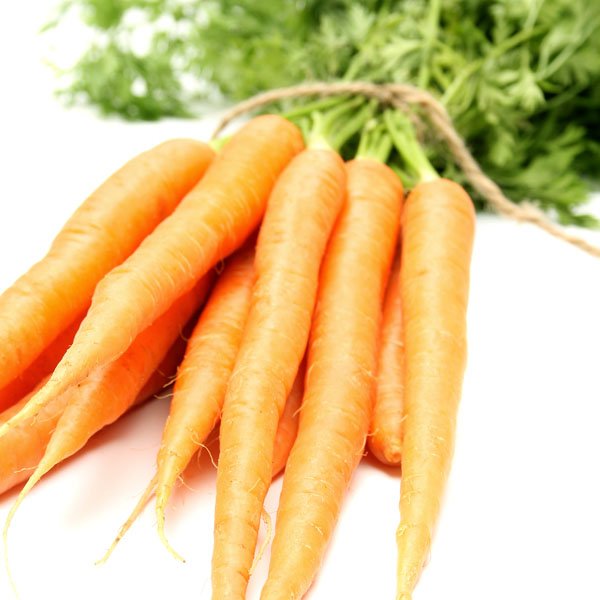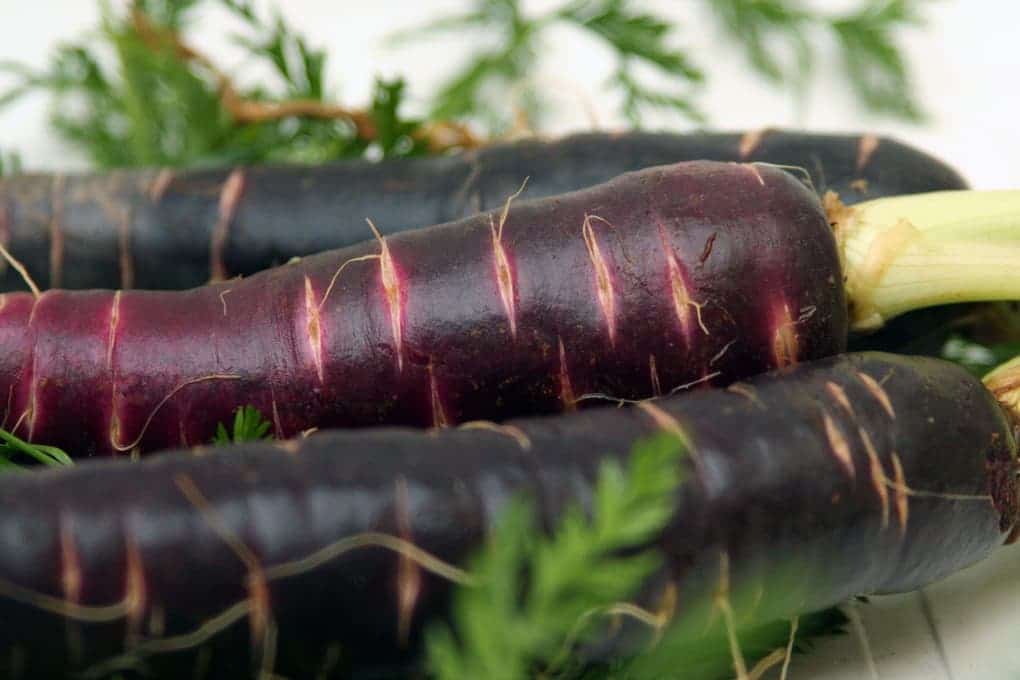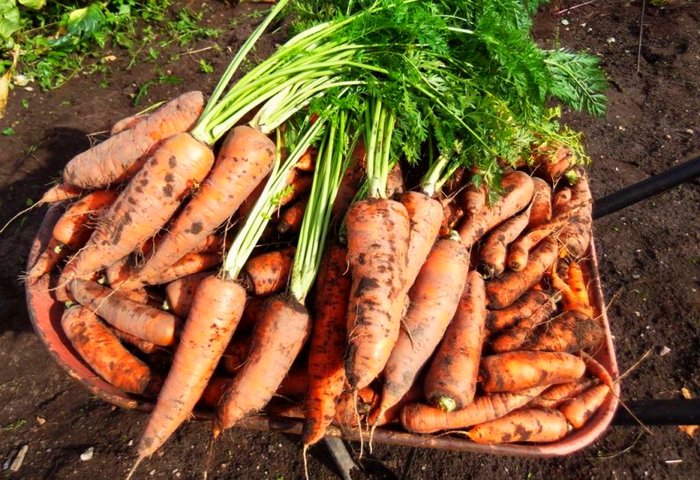Content:
Carrots are one of the healthiest root vegetables around. The range of application of carrots is very large: baby food, medical food, diet food, confectionery and normal diet. It is not surprising that summer residents grow this vegetable on every personal plot.
Shantane carrots belong to the top ten world varieties. It was bred in 1943 by French breeders. After a series of successful trials, the variety settled in Asia, Europe and America. Thanks to the efforts of Russian breeders, Shantana managed to be zoned in the middle of the 20th century, so in Russia she also took root and fell in love.
Characteristics of the variety
Shantane is recognized as a universal variety. The fruit is cone-shaped with a smooth tip. The color is rich orange, sometimes reddish. The taste is pronounced sweet. The foliage develops very powerful, with fleshy stems of bright green color. The flesh of the carrot is very juicy and crispy, the core does not stand out much.
The varietal feature of Shantane is the absence of defective fruits.
Shantane carrots: variety description
| Characteristic | Index |
|---|---|
| Yield | 5-9 kg / m2 |
| Length | 0.12-0.25 m |
| Weight | 0.1-0.25 kg |
| Ripening period | 3-4 months |
| Sugar content | 5,5-10,0 % |
| Carotene content per 100 g. | 25 mg |
This variety turned out to be so successful that it became the ancestor of several more varieties:
- Shantane carrot 2461. The ripening period is 4 months. The cone-shaped fruit grows up to 25 cm long and weighs up to 0.2 kg. The variety is adapted for all climatic zones and soil types. The fruits do not crack or turn green;
- Royal. The ripening period is 3-3.5 months. Often grown as young carrots and sold in bunches in markets. Rich in carotene, contains a lot of sugar;
- Shantane Royal carrots. The main external difference from others is a shortened fruit, while the yield is higher than the rest - 9 kg / m2. Royal is great for making carrot juice;
- Red Core. Ripens in 3.5 months. Shows a stable yield for any type of soil - about 8 kg / m2;
- Kuroda. The only early variety, the maximum ripening period is 3 months. After 2 months, the fruits begin to be eaten.
Summer residents successfully grow any of these varieties throughout Russia. You can buy seeds from specialized horticultural departments or large stores, or order them online.
Growing features
Choosing a landing site
First of all, it is worth choosing a bed, focusing on the rules of crop rotation. The best predecessors for Shantane Royal carrots are tomatoes, onions, cabbage. Planting after umbrella greenery is not allowed. Celery is also a bad precursor. Carrots can be planted in the same area 4 years after harvest. The ideal planting site is a well-lit area with light, loose soils, preferably loam or sandstone. With increased acidity of the soil, liming should be carried out, since acidic soils greatly reduce the yield of carrots. Deoxidation can be done with dolomite flour, the consumption rate is from 300 g to 500 g per 1 m2, depending on the initial acidity level.
In general, Shantane bears fruit well on any soil, including heavy ones.The introduction of a small amount of humus significantly improves the characteristics of the soil.
Sowing
Chantenay Royal carrots can be planted in spring and autumn. Regions with harsh winters are not suitable for autumn crops, as the seeds freeze from severe frosts. Spring sowing occurs in the third decade of April - the first decade of May. In the southern regions, you can sow from the beginning of April. Even with an unexpected frost, the seeds will sprout. Before sowing, the seeds are soaked for 12 hours. The floating seeds are not suitable for growing; they must be removed from the container and discarded. The remaining seeds are etched in a 1% solution of potassium permanganate for 5 minutes. Sometimes seeds are germinated on a windowsill. To do this, they are laid out on a damp soft cloth and left at a temperature of + 20˚C. When the tissue begins to dry, it must be moistened again until the seeds hatch. Under good conditions, good quality seed will germinate in 3-4 days.
Sowing is carried out in soft soil, in pre-marked grooves. The soil must be dug to a depth of 0.25-0.3 m, then the fruits will grow straight, since they do not have to make an effort to break through the layers of the earth. Also, do not fertilize the beds before sowing with fresh manure. It will be difficult for carrots to break through dense layers, and also from an excess of nutrients, it becomes covered with hairs and grows fat. Seeding is carried out in rows with a row spacing of 0.15 m, a row depth of 2-3 cm, a distance between seeds - 2 cm. You can sow in a chaotic manner, but then you will have to deal with thinning the seedlings. After planting the seeds, they are sprinkled with earth. After that, the bed can be watered, but very carefully so that the seeds do not wash out.
Care
The care includes standard procedures: loosening, watering, fertilizing, weeding and thinning as needed.
- Seedlings need to be watered every 4-7 days, the rate of water consumption is 4 l / m2. When root crops begin to form, you need to water the garden bed 2 times less often, but the water consumption should also be increased 2 times. Formed fruits, it is enough to water 2-3 times a month, the water consumption rate is 10 l / m2. Watering is stopped 3 weeks before harvesting;
- Thinning must be done so that the fetus has enough space and nutrition for quality development. The first thinning is done when 2 true leaves are formed, leaving 2-4 cm intervals between shoots. If necessary, the second thinning is done when the fruits are about 1 cm thick. The distance between the carrots is increased to 5-7 cm;
- Weeding and loosening usually carried out together so as not to injure plants. Loosening is a very important procedure for carrots, but it should only be done in the aisles, otherwise the fruit can be damaged. Removing weeds is especially important at the time of seedling development and primary formation of root crops, since the grass takes up nutrients and prevents carrots from growing evenly;
- During the season, 4 dressings are usually done. The first is 20 days after the appearance of the leaves. At this time, nitrogen fertilizers are applied so that the tops develop well. Then every 2-3 weeks potash and phosphorus fertilizers are applied, they help the formation of fruits and fill them with nutrients. Carrots respond well to feeding with boric acid solution (2 g per 10 liters of water). Under the influence of this solution, taste improves, and sugar content increases;
Diseases and pests
Subject to preventive measures and agricultural techniques of cultivation, Shantan is not threatened with infection by fungal infections and an attack by insects. For the purpose of disinfection, the material is etched with a manganese solution before sowing. Also, compliance with the rules when choosing a site almost completely eliminates the appearance of pests and diseases.
In cases where the weed was not removed from the garden in a timely manner, and the soil was waterlogged, a carrot fly may appear. Twisted leaves serve as a signal of its appearance.In this situation, it is necessary to carry out antiparasitic treatment with pesticides, for example, Intavir or Aktellik. For prophylactic purposes against fungal diseases, you can treat the bed with Bordeaux liquid.
Harvesting
Harvesting takes place in September - October. You should not overexpose ripe fruits, as this impairs their taste. In order not to miss the optimal harvesting time, you need to mark the date when friendly shoots appeared. From this date, you need to count 15 weeks. It is best to choose a sunny day for harvesting so that you can dry the fruits outside. Store carrots in a cool, dark place with good ventilation and constant humidity. Wooden or plastic boxes are suitable as containers. You can store carrots in the sand. If necessary, carrots are stored in the freezer in grated or cut form. Carrot tops are also used for food, for example, as a salad green or as a seasoning in soups.
Advantages and disadvantages
Shantane belongs to those varieties that are perfect for both beginners and experienced summer residents. Carrots do not require much effort, but they yield a good harvest.
| pros | Minuses |
|---|---|
| Does not shoot flowering arrows and does not branch | No full-fledged disadvantages were identified |
| Taste qualities are recognized as one of the best, therefore Shantane is suitable for all dishes | |
| The fruits are very juicy and sweet | |
| Adapts well to growing conditions, is not capricious in care | |
| High immunity against parasites and infections | |
| Does not deteriorate during transportation | |
| Subject to storage conditions, it does not lose its properties for 8 months | |
| The fruits do not crack or rot |
